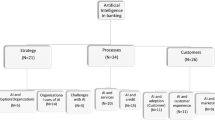Abstract
The system under which financial data are reported to the Oesterreichische Nationalbank is being restructured to reflect developments in financial statistics and in the IT environment in recent decades, as well as higher demands on data quality and quantity in the wake of the financial crisis. The objective of the restructuring project is to improve the data quality, specifically methodological soundness and data accuracy, consistency and reliability, and at the same time to enhance flexibility and reduce the cost of the reporting system for both the compiler and the reporting agent. A data model – the basic cube – is being developed jointly with the banking industry. The theoretical foundation of the data model is the widely used Entity Relationship model, which serves as a common language for the formulation of reporting requirements. The basic cube could be implemented as part of the logical data structure of the data warehouses at reporting banks. It will be used to define future reports to the central bank. These reports are based on ‘smart cubes’ and must fulfil legally defined reporting requirements. The design of the smart cubes makes it possible to use the data for many different purposes at the central bank. The data model thus will effectively and efficiently cover nearly all reporting requirements and will boost data quality.



Similar content being viewed by others
Note
ECB Conference on Statistics, Frankfurt, 17 and 18 April 2012; Andreas Ittner; Session 2.
Author information
Authors and Affiliations
Additional information
CORRECTION
The guest editor’s corrections to spelling and grammar have been made to the original Advanced Online Publication version of this paper.
Disclaimer
The views expressed in this article are those of the author, and do not necessarily reflect those of the OeNB. I am grateful to all colleagues of the OeNB and the banking industry having contributed to the development of data model described in this article.
Appendices
Appendix
KEY COLUMN CATEGORIES USED (EXAMPLES, DRAFT)
We present three examples to illustrate the key column categories used in the Austrian cubes: the ECB cube, the ISIN cube and the loan cube. Whereas the ECB cube is close to a final version, the loan cube (assets) and the ISIN cube (assets and liabilities) are still work in progress. The examples neglect special cases like securitisation or credit default swaps, as well as the dimensions necessary for handling a transition period or for checking purposes. The ECB cube focuses on the requirements of the ECB and leaves out most of the data that can be derived from micro cubes. The micro cubes are the source of data for the reports to the ECB, for data feeds into the credit register and for producing tables for supervisory purposes. However, there are currently no plans to derive consolidated data from these cubes.
ECB CUBE
To create the OeNB report to the ECB (balance sheet items and interest rate statistics), the OeNB will use data from the ISIN cube and loan cube. The ECB cube complements these data – data about loans might be integrated in the ECB cube during a transition period – and therefore includes mainly contracts on the liabilities side. The following key column categories are scheduled to be collected for the ECB cube:
-
Classification of the contract
-
Original maturity
-
Period of notice
-
Country of residence of the counterparty
-
Economic sector of the counterparty
-
Currency of the contract
-
Size class
-
Reported amounts (incomplete)
-
° Book value
-
° Exchange rate adjustments
-
° Reclassifications
-
° Nominal interest rate
-
° Narrowly defined effective rate
-
° Volume of new business in reporting period
-
° Volume of renegotiated contracts in reporting period
LOAN CUBE (DRAFT, IN DISCUSSION)
The following key column categories are scheduled to be collected for the loan cube:
-
Classification of the loan (for example, revolving loan, overdraft credit)
-
OeNB identification of the debtor: Identification of the counterparty of a loan; link to the register of the OeNB, information in the OeNB register about country of residence, sector, NACE and other classifications of the debtor. The OeNB view and the banks’ view will be reconciled. Diverging views can be handled.
-
OeNB identifier for subsidiaries of Austrian banks abroad: Calculation of home country and host country principle.
-
Balance sheet item according to Austrian Banking Act: Links to other taxonomies are under discussion.
-
Currency
-
Original maturity
-
Remaining maturity
-
Period to next interest rate adjustment
-
Initial fixed interest period
-
Interest calculation type
-
Indicator for repurchase agreement
-
Indicator for non-performing loan
-
Indicator for syndicated loans
-
Indicator for subordination
-
Indicator for eligible assets
-
Indicator for trust assets
-
Purpose of the loan
-
Rating of the borrower
-
Indicator for repayment vehicle
-
Amortisation method
-
Reported amounts (incomplete)
-
° Amount of loan/book value
-
° Risk weighted assets
-
° Expected loss
-
° Exposure value
-
° Collateral value (per collateral type)
-
° New business in period
-
° Credit line
-
° Specific provisions
-
° General provisions
-
° Collateralisation/ underlying assets
ISIN CUBE (DRAFT, IN DISCUSSION)
The following key column categories are scheduled to be collected for the ISIN cube:
-
ISIN to identify the security
-
Identifier for issuer
-
Balance sheet item according to Austrian Banking Act: Links to other taxonomies are under discussion
-
Indicator for trust assets
-
Indicator for eligible assets
-
Indicator for admission to trading
-
Indicator for subordination
-
Indicator for trading book/banking book
-
Indicator for intangible fixed asset/working capital
-
Attachment point
-
Detachment point
-
Weighted average life
-
Rating of the tranche
-
Reported amounts (incomplete)
-
° Book value
-
° Market value
-
° New issue in reporting period
-
° Redemption in reporting period
-
° Specific provisions
Rights and permissions
About this article
Cite this article
Hille, E. Recent developments in restructuring the Austrian banking reporting system. J Bank Regul 14, 269–284 (2013). https://doi.org/10.1057/jbr.2013.12
Published:
Issue Date:
DOI: https://doi.org/10.1057/jbr.2013.12




